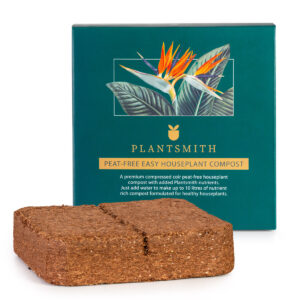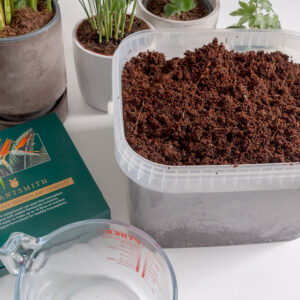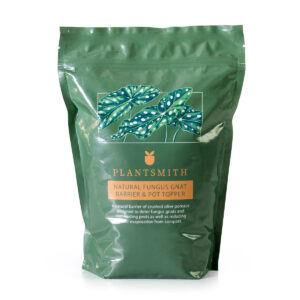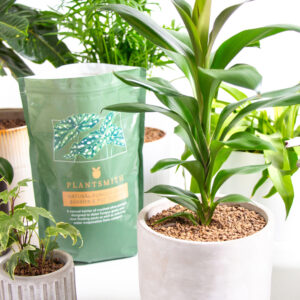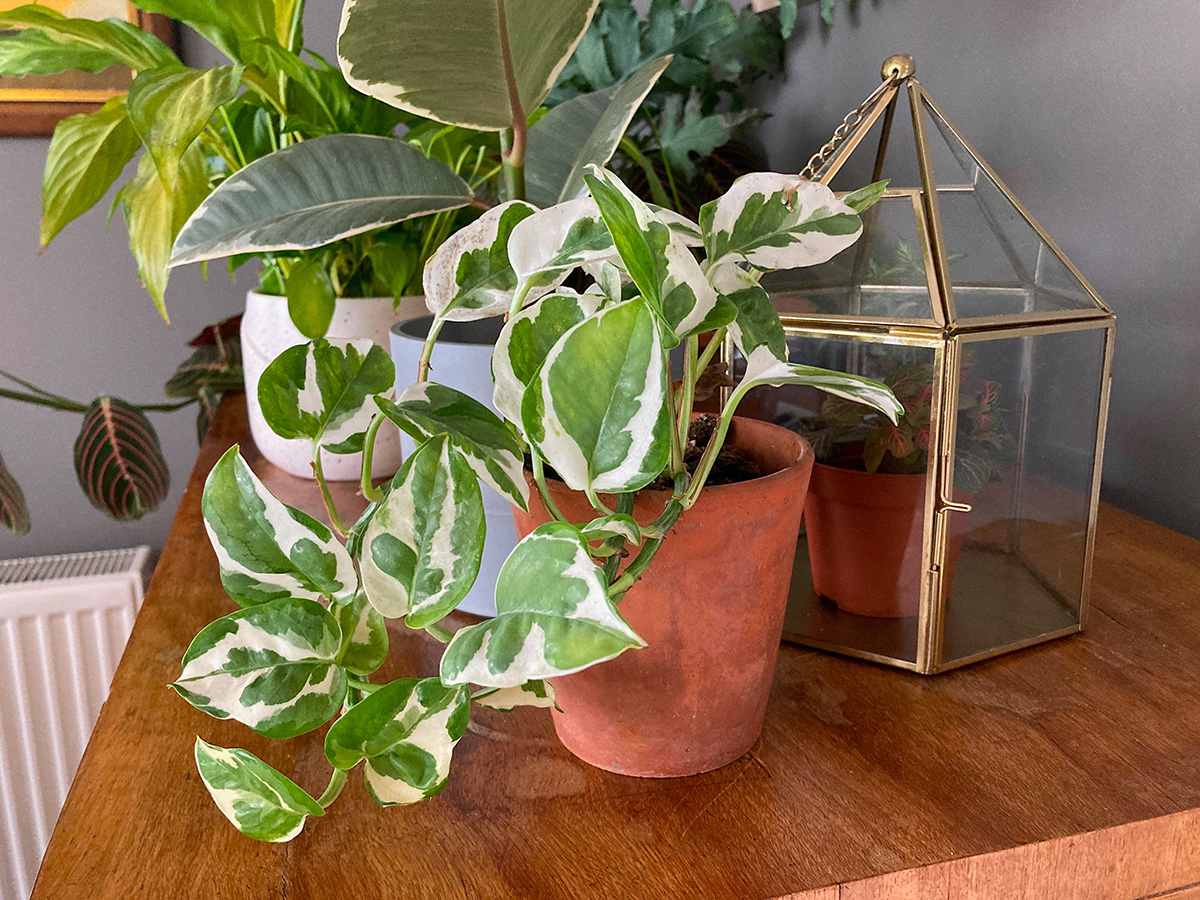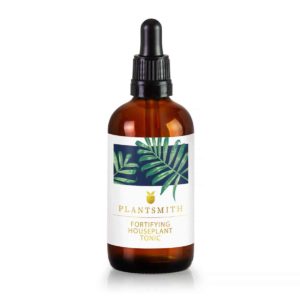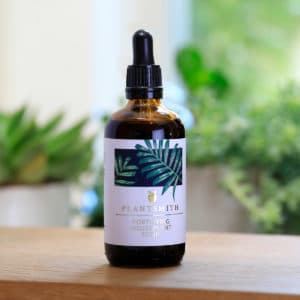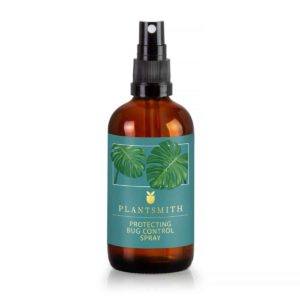Epipremnum aureum or golden pothos also boasts an aptly chilling halloween name, Devil’s Ivy. It has a reputation of being indestructible and can survive most living conditions; it even manages to remain green if kept in the dark.
Originating from the South Pacific French Polynesian archipelago, the Society Islands, Mo’orea, Tahiti, Raiatea, Huahine and Bora Bora, it grows in deep shade clinging to the trunks of trees in forests.
Devil’s Ivy has heart-shaped yellow and green foliage that will cascade from hanging pots and shelves or will happily climb up a moss pole. When conditions are right, this is a fairly fast growing houseplant that can really trail.
There are many different varieties of Epipremnum to choose from, each with their own set of exquisite foliage from ’N’Joy” with white and green variegation, ‘Neon’ with bright, acid-green leaves, ‘Pearls and Jade’ with marbled cream and blue-green foliage, slim-leafed ‘Jade’ to ‘Snow Queen’ sporting very pale variegated leaves.
Although not pet friendly this wonderful trailing houseplant is beautiful and easy to look after so a good plant for newbie houseplant parents.
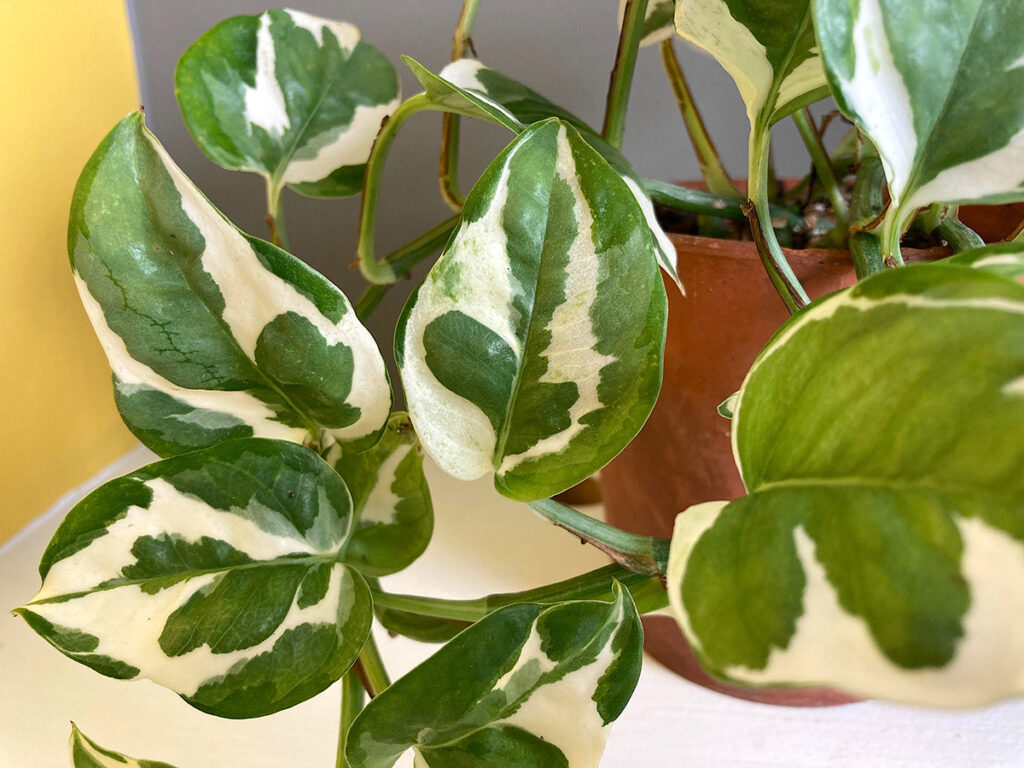
Light
Epipremnum can tolerant low light but they perform best in bright indirect sunlight. Keep them away from direct sunlight particularly in the summer as this can scorch leaves.
Water
Ideally keep the soil moist but leave the top inch to dry out before re-watering; about once a week should be ample. Epipremnum dislike sitting in water; soggy roots can rot. Favour rainwater over tap water.
Temperature
Epipremnum naturally live in humid forests so within our homes a steamy bathroom or kitchen is an advantageous location. Optimal room temperatures range from 15 to 26°C (60-80°F).
If you need to increase humidity try grouping houseplant pots together or stand plant on a tray of pebbles.
Regularly spray foliage with a fine mist of rainwater or Plantsmith Perfecting Houseplant Care Mist, which will not only improve humidity but also provide the plant with essential nutrients. Misting temporarily increases humidity surrounding the plant and helps compensate for the dry air in our homes, particularly over winter once the radiators are back in action.
Soil
Fill your container with houseplant compost or make up your own mix with peat-free compost and perlite, orchid bark or LECA to help drainage. Repot your plant every couple of years, this will refresh the compost and dispel mineral salt build up or pests. Repot during spring to summer.
Fertiliser
Pothos are not heavy feeders so applying a houseplant fertiliser once a month from spring to autumn will be ample to keep foliage healthy. All potted plants rely entirely on us to feed and water them so ensure the formula you give is in tune with houseplant’s needs.
Plantsmith’s Fortifying Houseplant Feed & Tonic contains the optimum ratio of nutrients for houseplants and has been blended to provide a perfect balance of iron, magnesium, potassium, kelp and essential macro and micro nutrients to encourage strong, healthy growth.
Shake the bottle so all nutrients are evenly mixed then apply the formula by adding 5 ml (approx. 4 pumps) from the 500ml bottle or dilute one pipette from a 100ml bottle into a litre of tepid rainwater and water onto the soil.
Plants carry out all their chemical reactions in solution so using soluble food stops plants wasting energy converting pelleted plant food into a useable form.
Houseplants require a weaker feed formula than many outdoor plants. Over fertilising can be detrimental to houseplant health as excess salts may build up and burn roots. A balance of essential nutrients and minerals will help keep houseplants healthy and less likely to succumb to pests and diseases.
Flower
In our homes, in a pot, Pothos is unlikely to ever flower. The stunted dwarf size of our contained houseplants means the plants are kept at their juvenile stage rather than reaching their mature reproductive phase. In the wild these plants will reach an enormous size, living in high humidity and temperatures over 21°C/70°F and in these ideal conditions they will produce blooms similar to a Peace Lily with a flower stalk surrounded by a cape-like curved bract called a spadix.
Propagation
Pothos are very easy to propagate by cuttings. Simply take a cutting about 10cm long below a leaf node and pop it in a glass of water so you can watch the roots form. Ideally make sure your cutting has two to three nodes and leaves if possible. Place the glass jar on a bright windowsill and in a few weeks roots will form. Once roots have established then pot on your cutting into a small container of houseplant compost and enjoy your new propagated plant.
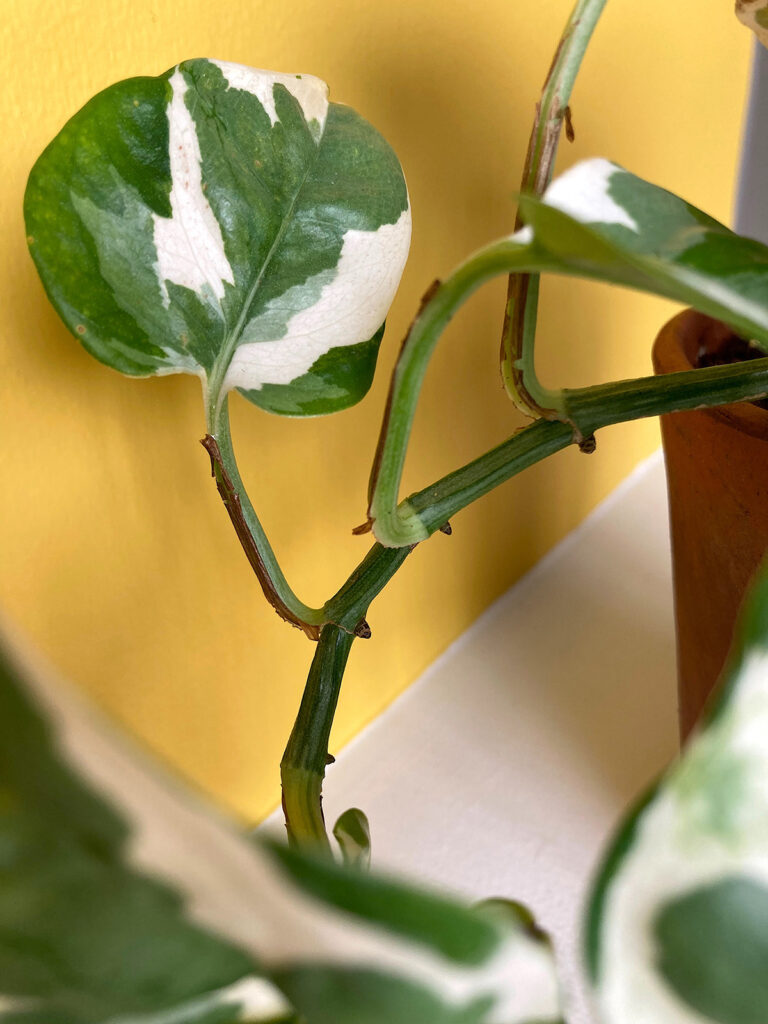
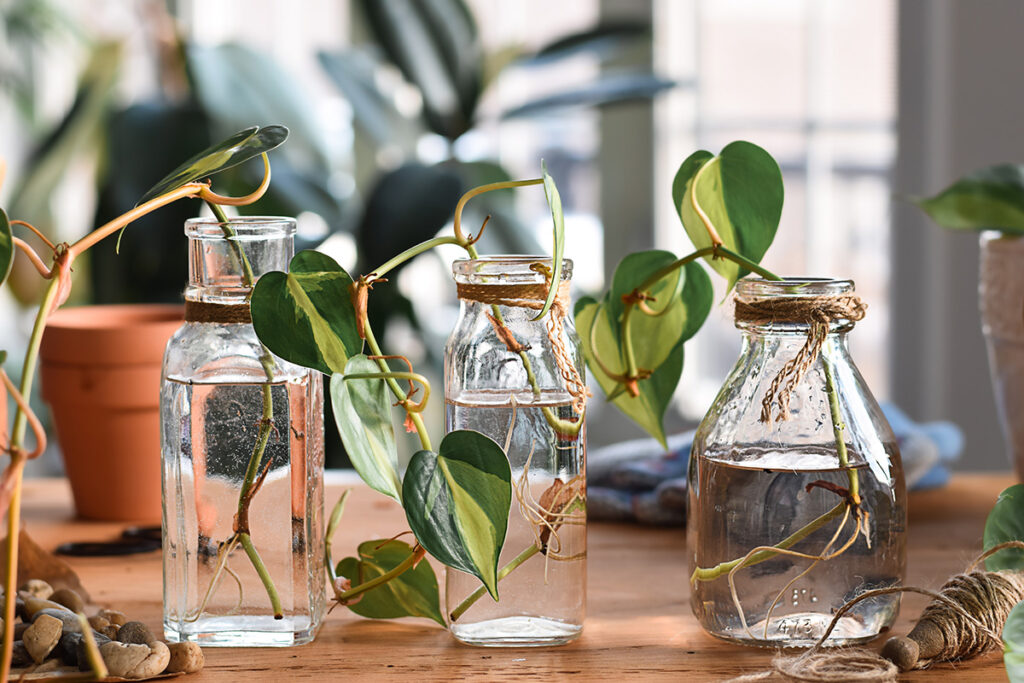
If you have a large parent plant you can also propagate by division. Simply remove the plant from its pot and gently tease the roots apart to separate into smaller sections then pot these on into soil.
Problem Solver
Pothos are toxic to cats, dogs and humans so keep out of reach of pets and infants; it contains calcium oxalate which can cause swelling and vomiting. Always wear gloves if handling your plant as the sap can be a skin irritant.
Yellow leaves
This could be an indication of various factors one being overwatering. If your plant leaves turn yellow, ease back on the watering and let the soil completely dry out. You could be killing your plant with kindness and too much attention. Snip off yellowing leaves to make room for new fresh growth. On the opposite end of the scale it could also be due to underwatering, in which case increase your watering frequency.
Liquid dripping from leaves
Pothos has a rather spooky characteristic where tear-like fluid drips from its leaves. This is actually a natural process known as guttation. Excess fluid is released from the xylem when pressure has built up. Guttation may appear to be supernatural but is in fact a natural phenomena.
Loss of variegation
If foliage loses its variegation this could be a sign that the plant is not receiving enough direct sunlight. This forest vine will happily grow in shady understories but it is at the sacrifice of variegation. This is easily remedied by simply moving the plant to a lighter position.
Pests
Pothos are not particularly prone to houseplant pests but keep on the look out for mealy bugs, scale, spider mites, and aphids.
Use Plantsmith’s Protecting Bug Control Spray across the foliage to deter pests. This natural formula is 100% vegan and provides plants with essential nutrients. Plantsmith’s Protecting Bug Control Spray blends natural surfactants alongside magnesium, iron chelate, and manganese chelate which helps boost the plant’s vigour.
Check houseplant leaves regularly for signs of pest damage. Infestations can also be removed by hand with a cloth. If leaves have been damaged then cut them out, this will put the plant’s energy into its remaining healthy leaves.
Fungus gnats can be difficult to eradicate; yellow fly paper traps in houseplant pots will attract the adult flies then use a biological control to break the gnats lifecycle. Water the soil with parasitic nematodes, Steinernema feltiae. A few applications may be needed but keep perserving, your plants should end up fly-free.
Fun Facts
The Latin name Epipremnum is derived from the Greek word ‘epi’ meaning ‘upon’ and ‘premnon’ Greek for ‘stem’ aptly describing this plant’s habitat of growing up stems or rather tree trunks.
In Hawaii and Sri Lanka, Devil’s Ivy is considered an invasive species as it covers roadside trees.
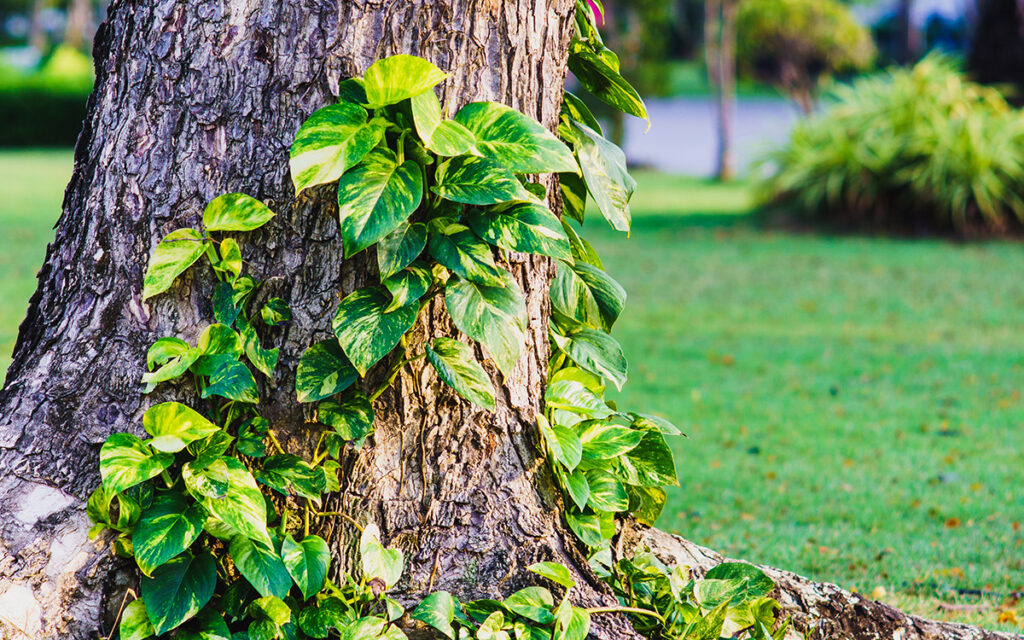
Pothos are air purifying houseplants and can remove toxics such as benzene, formaldehyde, xylene and toluene from the air.
Epipremnum aureum can be mistaken for Philodendron scandens and vice versa. There are many similarities.
This houseplants has the reputation of being lucky and in Asia symbolises wealth and good fortune.
